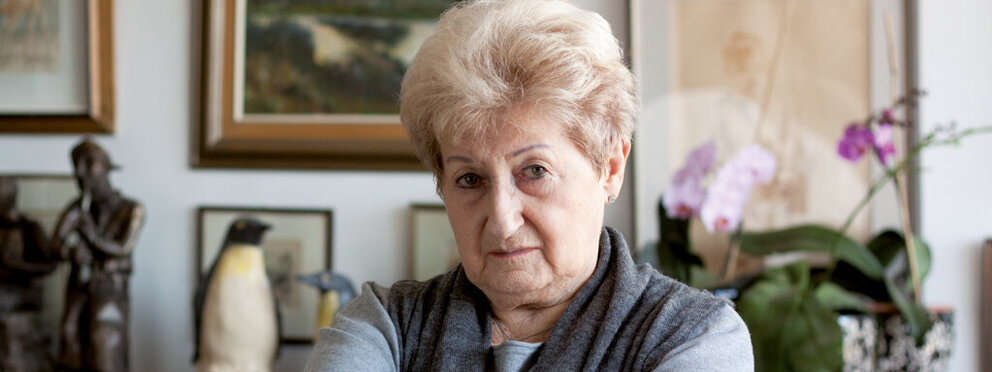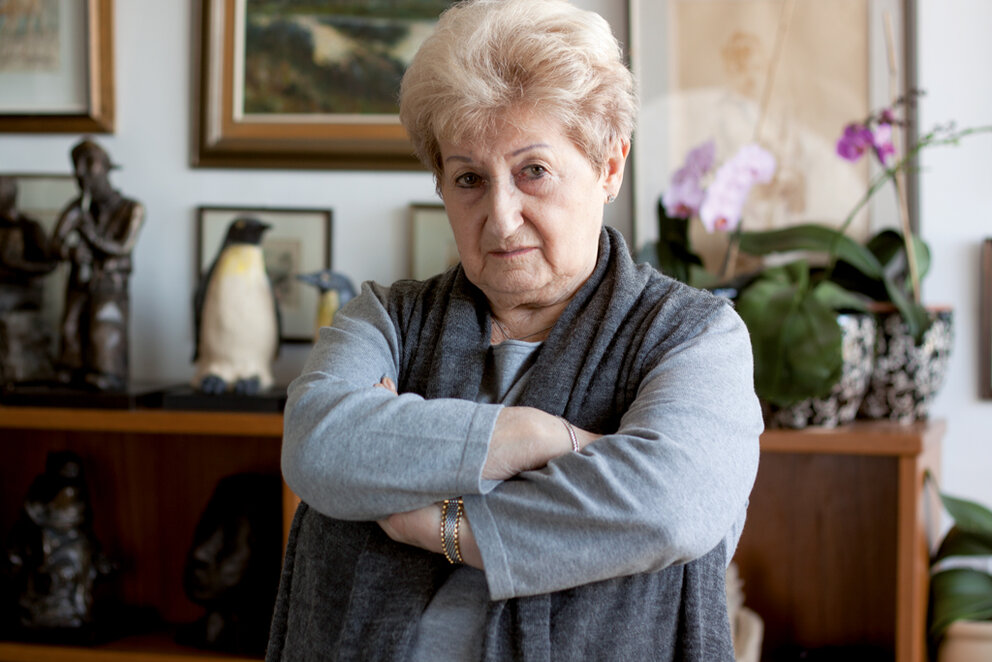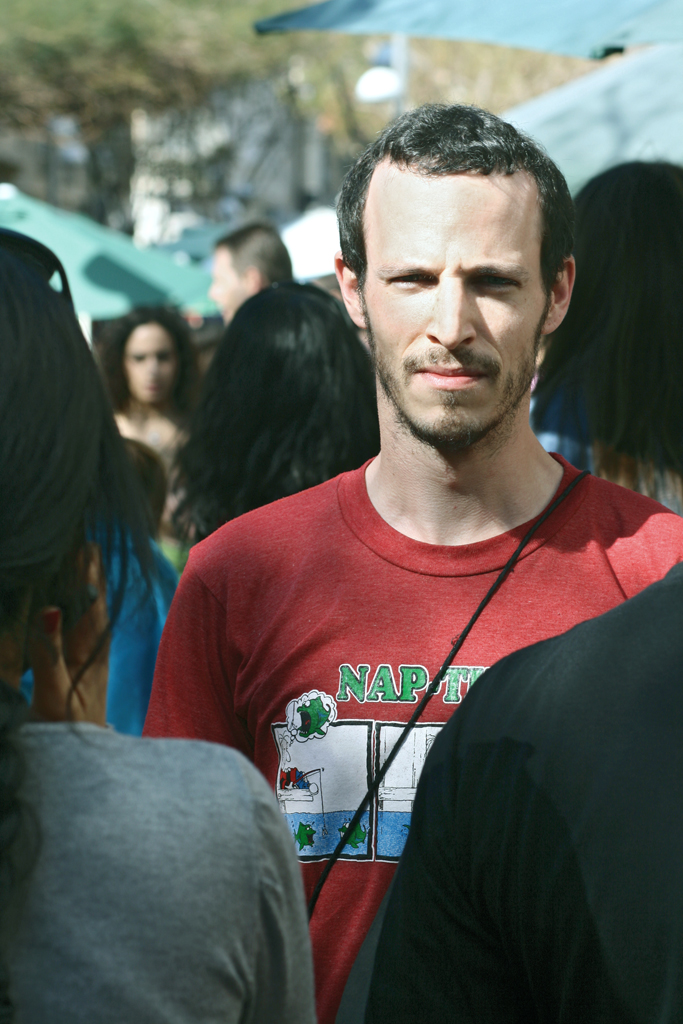
Shoshana Maze
About Shoshana Maze
Polish-born Shoshana Maze arrived alone in a foreign country on 15 May 1948. It was the first day of the new state of Israel, which became her new home from that moment on. She does not talk about the years in which she lived in hiding with her family in a very small space. Instead, she remembers her childhood in a happy family, birch trees and lilies of the valley all the more vividly.
»After the Schoah we wanted to live. I went to school, I learned piano, [...] we sang, danced, we started to live.«

A picture to live on
At the end of our meeting, we sit together cosily in the kitchen and Shoshana asks us about our lives in Germany: What are our interests and how do we organise our lives? They are almost the same topics as the Israeli youth. The only difference is that life in Israel is still strongly characterised by political uncertainty. Shoshana is tired of that.
She has only been to Germany once, but she doesn't want to go there again. Her home is Israel. Here she can rest and sleep at night. We met her grandson Daniel at the big market in Tel Aviv. He is our age, loves Israel and told us about his grandmother with so much warmth that we photographed him directly as part of the portrait. There are light and dark sides. We learnt that from our first encounter. The important thing is: Shoshana Maze is alive.

Our encounter
Shoshana has found a new home in Israel. She talks about her country, her art and, above all, her family when people ask about her life there. Her living room is a large gallery that displays all her works of art. With her great passion, sculpting, she has found a way to deal with the images in her head. She processes them in her own way.
"I wanted to study music, but my father said no, so I had to finish school first, because what he said, I did. I went to university to study social work, which I really enjoyed.
I once went for a walk by the sea with my husband and saw a man picking up stones. He was putting them together and moulding them into sculptures. After a while, I asked my husband to collect stones for me too and I started sculpting. I later took a few sculpture courses and have been doing it ever since."
She doesn't like to talk about the time during the Shoah, that's closed. In her face we recognise a spark of her pain of remembrance. She lives in the present. And she lives full of joy. When one of her daughters comes to visit, she talks about her grandchildren and their lives with the pride of a grandmother.
